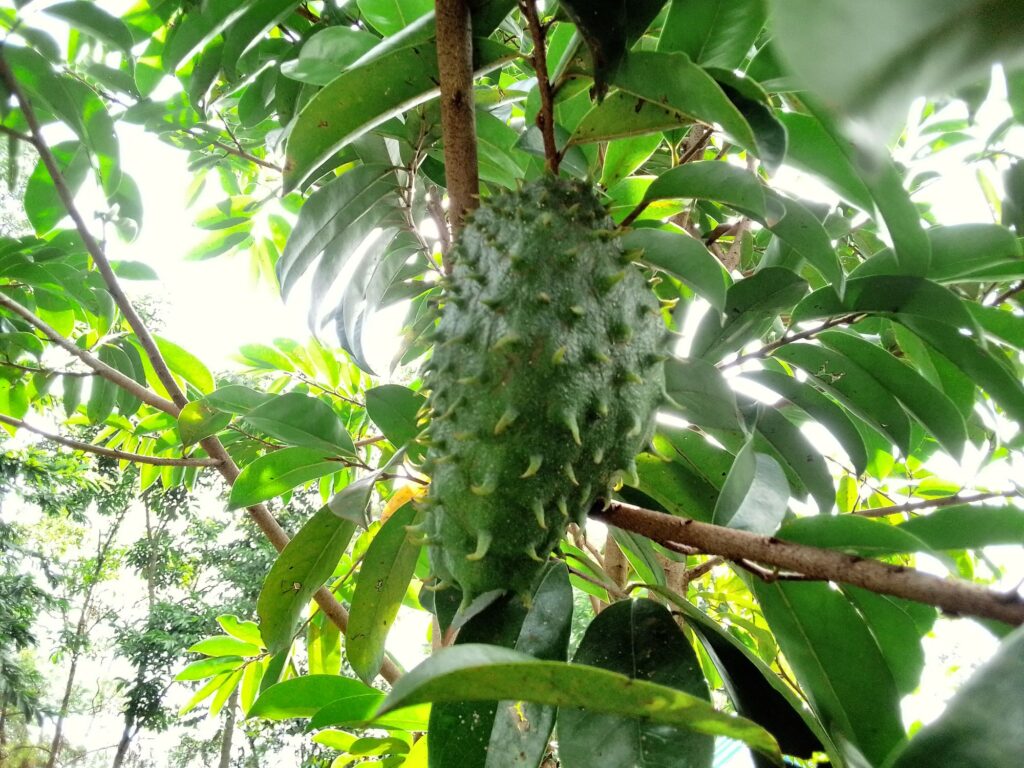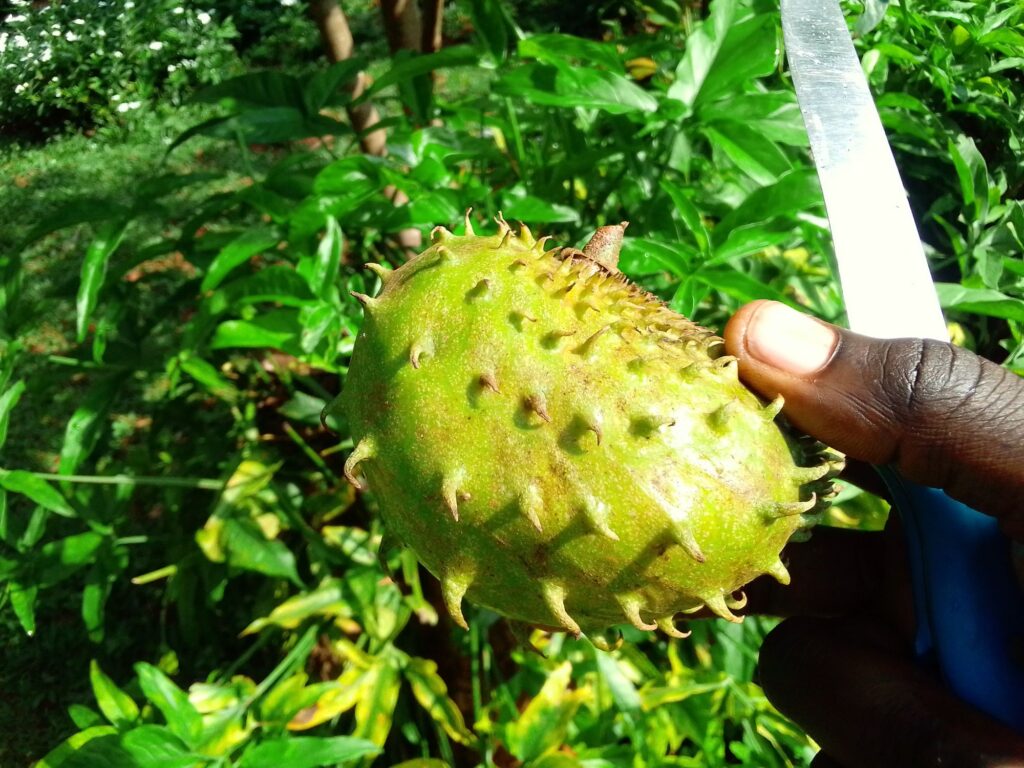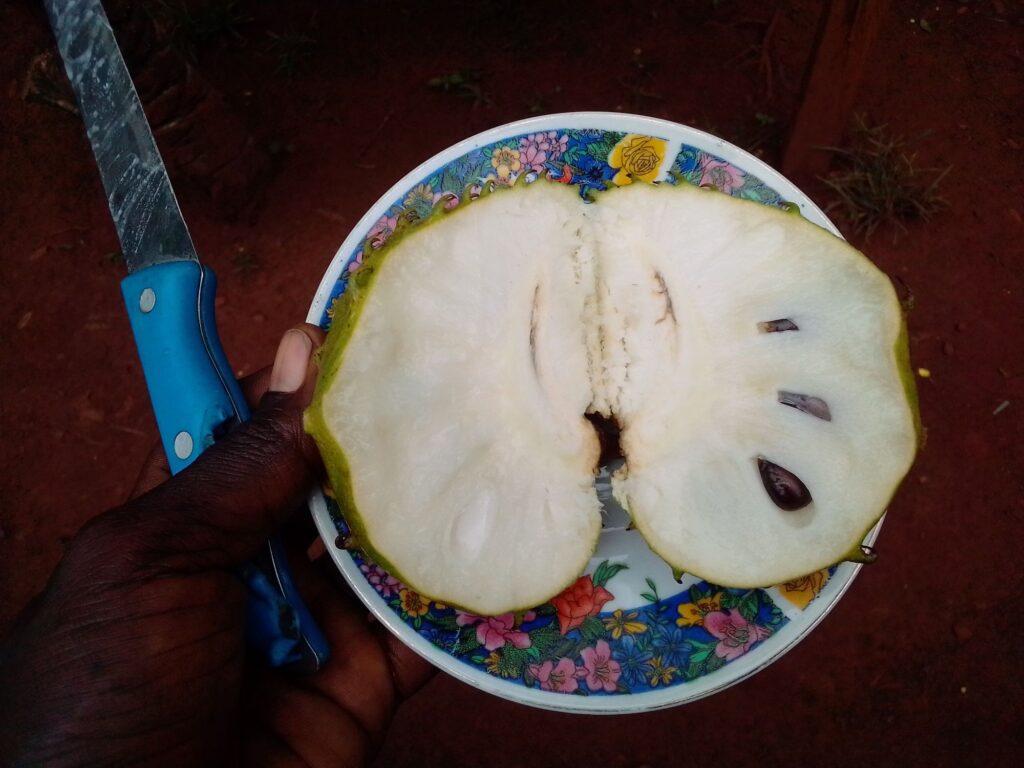
When it comes to tropical fruits, most people can easily name pineapples, mangoes, and bananas. But tucked away in backyard gardens and village markets across this vast continent of Africa is a green fruit with a sweet surprise inside. It’s called Tomoko—more widely known in English as the custard apple (Annona reticulata or Annona squamosa)—and it’s likely a superfruit you’ve never tried.
This is more than just a tropical curiosity. Tomoko is rich in nutrients, easy to grow, and holds surprising promise in both local diets and future agribusiness ventures. But for me, it’s a story that started with something far more personal.
My introduction to Tomoko wasn’t through a market or a book—it came via my nephew, who showed up one day in 2020 with a curious green fruit covered in light bumps (not spikes, as I had originally thought). None of us had seen it before. Intrigued, we cut it open, revealing creamy white pulp with a sweet, custard-like aroma. He called it Tomoko. We shared the fruit, and to my surprise, I loved it.
I saved the seeds, dried them, and planted a few in a small corner of my garden. Years passed, and just recently, we harvested the very first fruit from that tree. My two-year-old daughter, who usually rejects anything new or sour, devoured a large piece with pure delight. Everyone who tasted the fruit agreed it was delicious. That moment sealed it for me—I’m planting more Tomoko alongside my Hass avocados and passion fruits in my little orchard. It’s a fruit worth growing.

What Exactly Is Tomoko (Custard Apple)?
Tomoko is the local name for the custard apple, a tropical fruit native to Central America but widely grown across Africa, Asia, and the Caribbean. It grows on a small tree and usually resembles a heart-shaped or rounded green fruit with textured skin.
Inside is a soft, creamy white pulp with black seeds and a flavor often compared to vanilla custard blended with banana and pear. The fruit is eaten fresh or used in smoothies, juices, desserts, and even fermented beverages.
Health Benefits of This Little-Known Superfruit
Tomoko may be new to you, but in many communities, it’s long been valued for its medicinal properties and nutritional richness:
1. Boosts Immunity – Rich in Vitamin C
2. Packed with Antioxidants – Helps fight cell damage
3. Promotes Digestive Health – High in dietary fiber
4. Supports Heart Function – Contains potassium and magnesium
5. Aids Brain Function – Thanks to vitamin B6
Both the fruit and the leaves are used in traditional herbal remedies, often to relieve indigestion, inflammation, or fatigue.

Growing Tomoko in Your Garden
Custard apple trees don’t require much space and thrive in warm, tropical climates. If you live in such a region, it’s worth trying to grow one.
Propagation: From seeds or grafted saplings
Climate: Prefers heat and moderate rainfall
Soil: Well-drained and rich in organic matter
Watering: Regular but not excessive
Time to Fruit: 2–4 years from seed
These trees are generally hardy and resilient, making them ideal for small homesteads or mixed-crop orchards.
Agribusiness and Economic Potential
Custard apples are still an underexploited crop, but they offer real value. As demand rises for exotic, nutrient-dense fruits, Tomoko presents promising opportunities for farmers and food processors alike.
Fresh Produce: Sold locally or at regional markets
Value-Added Products: Ice creams, juices, smoothies, and jams
Traditional Remedies: Dried leaves and powdered pulp used in herbal supplements
Export Potential: Especially in niche health food and ethnic markets
Farmers already growing passion fruit, avocado, or guava can integrate Tomoko trees for income diversity.
For smallholder farmers, this fruit offers untapped agribusiness potential. With proper post-harvest handling, drying, and packaging, Tomoko can be part of a diversified income stream—especially when grown with other high-demand crops like avocado and passion fruit.
Final Thoughts
Tomoko is proof that some of nature’s most powerful gifts grow quietly around us—underappreciated, delicious, and full of value. From a single fruit brought home by my nephew to a thriving tree in my backyard, Tomoko has gone from an unknown curiosity to a family favorite.
So if you ever come across this spiny, green fruit—try it. Grow it. You just might discover your new favorite superfruit.

Disclosure: This banner contains an affiliate link. I may earn a commission if you purchase through it, at no extra cost to you.
